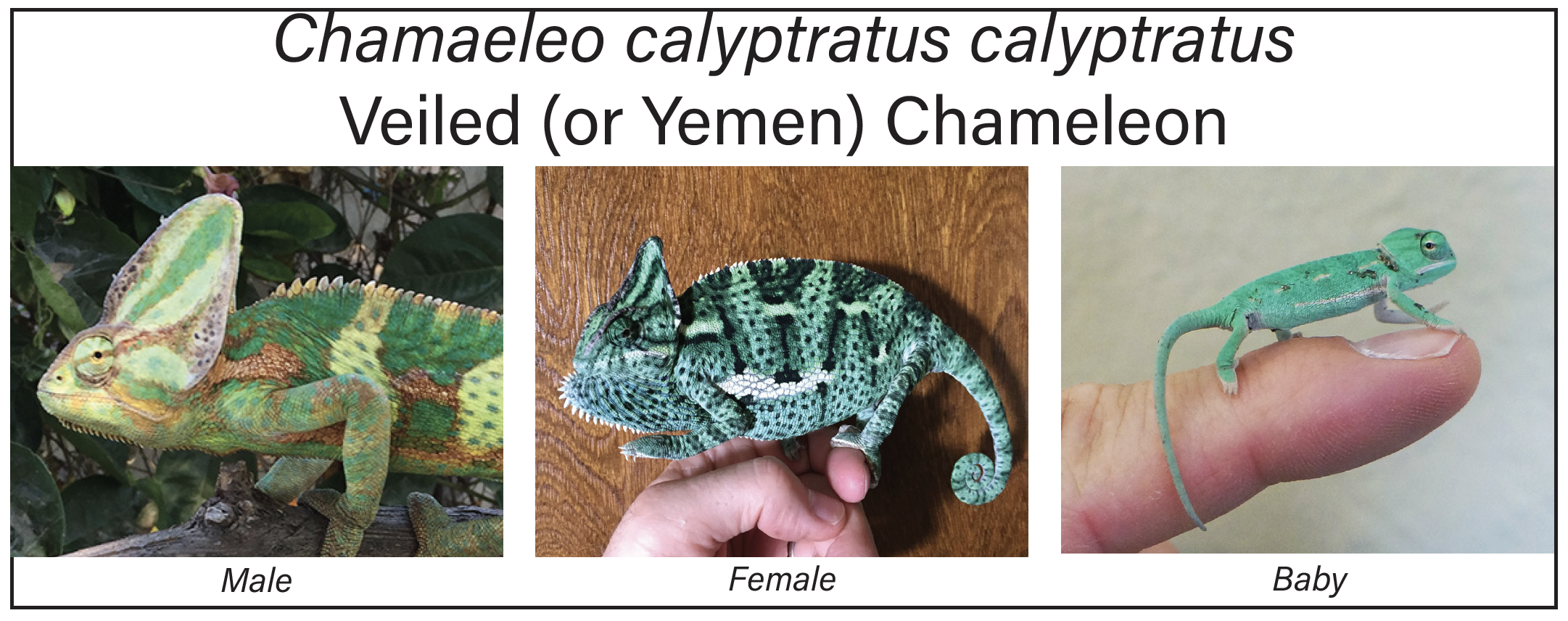
Baby Veiled Chameleon Care: A Comprehensive Guide
Introduction
Baby veiled chameleons (Chamaeleo calyptratus) are captivating creatures that require specialized care to thrive. These delicate hatchlings demand a meticulous environment that mimics their natural habitat. This comprehensive guide will provide all the essential information necessary to ensure the well-being and proper development of your baby veiled chameleon.
Housing
- Enclosure: A spacious enclosure is crucial, measuring at least 24" x 24" x 48" for a single baby. The enclosure should be well-ventilated with ample cross-ventilation.
- Substrate: A substrate that retains moisture and provides drainage is ideal. Options include a mix of organic potting soil, coconut fiber, or sphagnum moss.
- Decor: Provide plenty of live plants, branches, and vines for climbing and hiding. Artificial plants can also be used, but ensure they are non-toxic.
Temperature and Humidity
- Temperature: Maintain a temperature gradient within the enclosure, ranging from 75-85°F (24-29°C) during the day and 65-75°F (18-24°C) at night.
- Humidity: Baby veiled chameleons require high humidity levels of 60-80%. This can be achieved through regular misting, a humidifier, or a fogger.
Lighting
- UVB Lighting: UVB lighting is essential for calcium absorption and overall health. Provide a UVB bulb with a wavelength of 5.0% and ensure it covers at least half of the enclosure.
- Basking Spot: Create a basking spot with a temperature of 85-90°F (29-32°C) using a heat lamp or ceramic heat emitter.
Diet
- Live Insects: Baby veiled chameleons primarily feed on live insects. Offer a variety of insects, such as crickets, dubia roaches, and silkworms.
- Gut Loading: Before feeding insects to your chameleon, gut load them with nutritious foods to provide essential vitamins and minerals.
- Supplements: Dust insects with calcium and vitamin D3 supplements twice a week.
Water
- Hydration: Baby veiled chameleons are prone to dehydration. Provide a shallow water dish or mist the enclosure regularly.
- Drinking: Encourage drinking by dripping water from a pipette or misting the leaves of plants.
Handling
- Frequency: Handle your baby chameleon only when necessary, such as for feeding or cleaning.
- Technique: Support the chameleon’s body and tail with one hand while gently grasping its head with the other. Avoid squeezing or grabbing.
Health
- Regular Checkups: Schedule regular veterinary checkups to monitor your chameleon’s health and prevent any potential issues.
- Common Health Problems: Respiratory infections, parasites, and metabolic bone disease are common health problems in baby veiled chameleons.
- Symptoms: Observe your chameleon for any signs of illness, such as lethargy, loss of appetite, or abnormal breathing.
Socialization
- Solitary Creatures: Veiled chameleons are solitary creatures and should not be housed together.
- Interaction: Handle your chameleon regularly to build trust and reduce stress.
Growth and Development
- Hatchling Stage: Baby veiled chameleons hatch at around 2-3 inches in length.
- Juvenile Stage: They reach sexual maturity at approximately 6-8 months of age.
- Adult Size: Adult veiled chameleons can grow up to 24 inches in length.
Conclusion
Caring for a baby veiled chameleon is a rewarding experience that requires patience, dedication, and a deep understanding of their unique needs. By following the guidelines outlined in this comprehensive guide, you can provide your hatchling with an optimal environment for growth, health, and well-being. Remember to consult with a qualified veterinarian for any specific health concerns or advice. With proper care and attention, your baby veiled chameleon will thrive and bring you years of joy and companionship.
